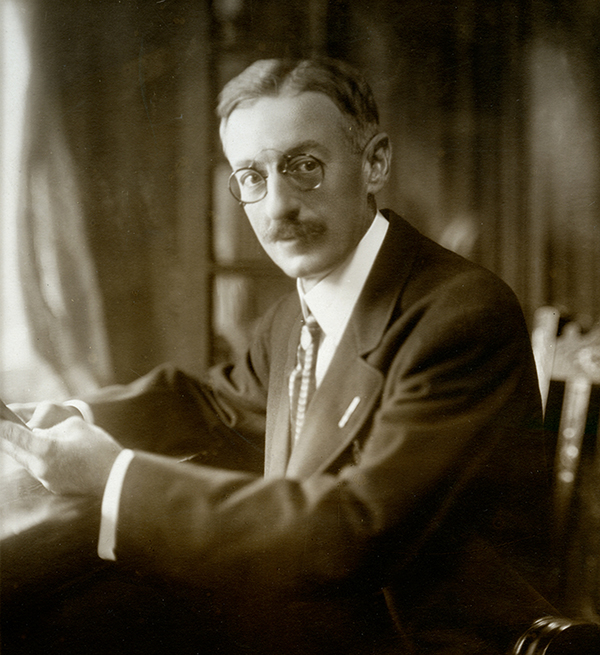
The following is a guest post from Robert M. Feibel, MD, acting director of the Center for History Of Medicine and professor of clinical ophthalmology and visual sciences at Washington University School of Medicine in St. Louis. His paper “James Moores Ball: Ophthalmologist, medical historian, bibliophile” was published in the Journal of Medical Biography in 2016.
James Moores Ball (1862-1929) was an ophthalmologist in St. Louis who excelled as a medical historian and collector of rare and historic books about the history of anatomy. During his lifetime, he was best known as the author of a comprehensive and authoritative textbook titled “Modern Ophthalmology.” First published in 1904 with 820 pages, the text was well received, sold well, and the publishers desired further editions. The sixth and last edition was published in 1927 and had grown to 1,513 pages, 648 illustrations, and hundreds of medical references.
Ball also acquired a collection of ophthalmic items consisting of photographs, drawings and photomicrographs of various ocular diseases. This collection of about 960 items formed his museum, which he carefully labeled and inventoried. In 1922, he donated this collection to the Army Medical Museum. The collection is now archived at the National Museum of Health and Medicine in Silver Spring, Maryland, where it is neatly curated and collected in 45 boxes.
Ball was very interested in the history of anatomy and wrote two books on this subject, the first being a short biography of Andreas Vesalius and the second a history of the “resurrection men” or grave robbers who sold corpses to professors of anatomy and surgery for teaching purposes.
His legacy today is the approximately 480 volumes of his personal library which he donated to the St. Louis Medical Society. They are now in the Archives and Rare Books Division of Becker Medical Library and form one of their major collections, the James Moores Ball Collection, concentrating on the history of anatomy beginning with a first edition of Vesalius’s “Fabrica” and holding many important and beautiful landmark volumes.
